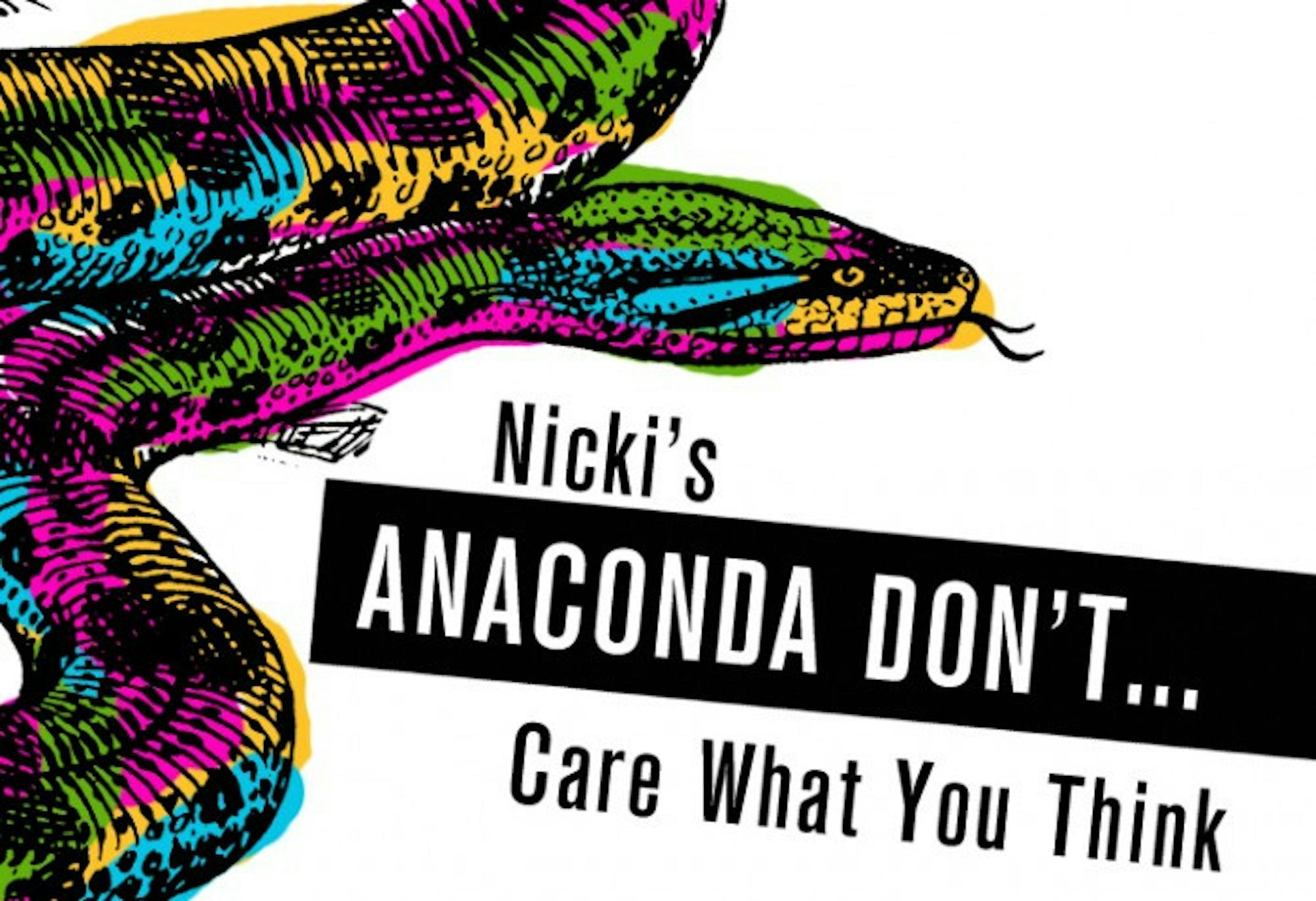
If you’ve been living under a rock since Aug. 19, you may have missed out on what has arguably been the biggest pop culture phenomenon since Miley Cyrus thought she could twerk — Nicki Minaj’s “Anaconda” music video.
The difference between Minaj and Cyrus? Nicki actually has license – and the assets – to twerk. And she’s not afraid to sing about — and show off — her aforementioned assets in the video. If you’ve been having trouble trying to make sense of the different criticism and praise of the video, I’m here to clarify … or perhaps just make things more confusing.
Whether or not you like Minaj or her video, the numbers are astounding. Sitting at 145,115,466 views as of Wednesday, the video accumulated 19.6 million views within 24 hours of its release. The feat broke Vevo’s previous 24-hour record held by Miley Cyrus with 19.3 million views of her “Wrecking Ball” video.
If you haven’t seen the video, I highly encourage it – if only just to stay culturally relevant. There has been a lot of controversy over the message Minaj is trying to express: some argue her image is positive, some say it is negative.
I’m here to argue that it establishes Nicki’s place as a new feminist model, albeit in a very different vein than Beyoncé’s “I Woke Up Like This/Everyone Is Flawaless” philosophy. For those struggling to see this side of the video, its choreography, Nicki’s verses and, perhaps most of all, the lap dance Nicki gives Drake at the end of the video all play to the idea. I would like to bring up Big Sean’s 2011 “Dance (A$$) Remix” video as a reference, in which Minaj makes a cameo not unlike Drake’s in “Anaconda.”
The contrast between these videos could not be more drastic. In the Big Sean video, we are barraged with images and lyrics pertaining to the objectification of women — nothing new to hip-hop, and the rap music world did not cause a stir when this video was released. Although some criticize Minaj’s overt sexuality as being inappropriate, when we consider the male presence, or lack therof, in the video, the hyper-sexualized outfits and choreography take on a different meaning.
While Big Sean tells countless scantily clad women (including Minaj herself) to “shake that ass” in his video, the only male to appear in “Anaconda” is Drake. Although a powerful recording artist in today’s entertainment industry, he doesn’t even make a contribution to the song – existing merely as a visual prop. Drake is clearly made to look like something of a fool. He is left speechless by Nicki’s aggressive demeanor and ownership of her body. Upon making a move to grab Nicki’s ass, something we wouldn’t bat our eyes at in most hip-hop videos, Nicki slaps him away — asserting that her body can be appreciated (she’s attractive and she knows it) but not taken advantage of.
This isn’t to say Nicki can do or has done no wrong. “Anaconda” represents a key culmination of the growth she has exhibited over the course of her career, within which there are definitely instances of her subjecting herself to the objectification of men or failing to channel her anger in an articulate way. However, here she is the owner of her sexual self-worth. Minaj rejects traditional beauty concepts through an aggressive celebration of a different body type.
When it comes down to it, there is no single definition of feminism nor one way of being a feminist. Nicki has found her own niche and established a unique, empowered image. Only one thing is certain: Nicki Minaj doesn’t care what you or anyone thinks of her, and perhaps that makes her the ultimate feminist.
Nicki's "Anaconda" Don't Care What You Think
Samantha Coughlin | The Observer
Samantha Coughlin | The Observer









